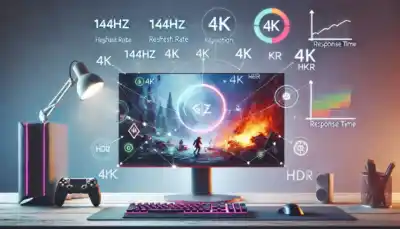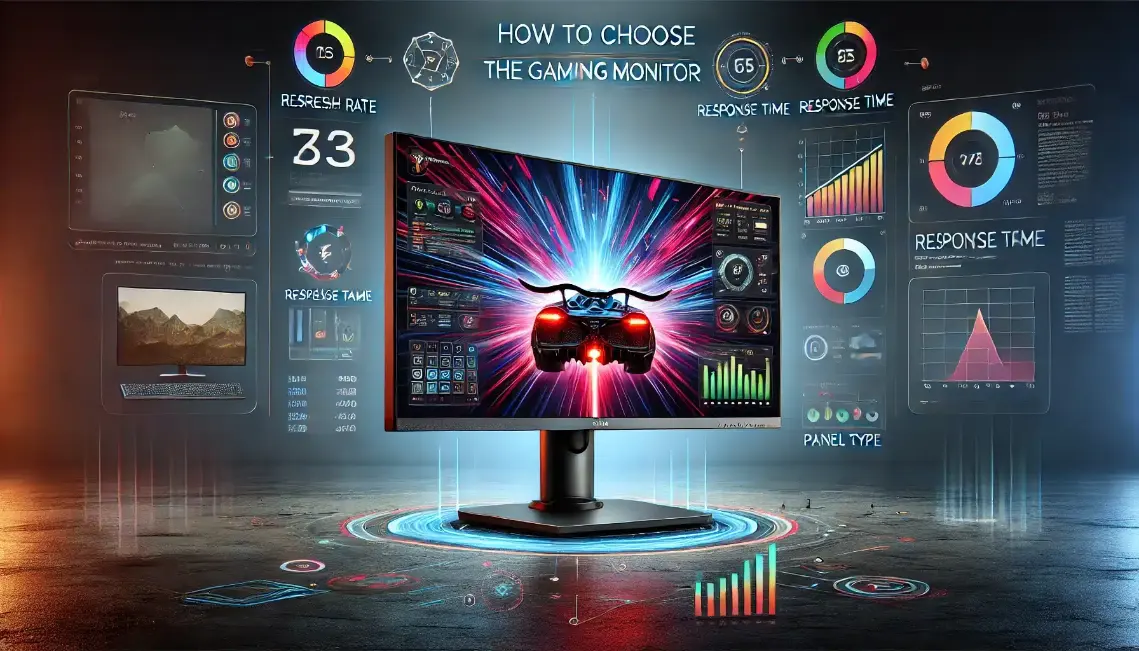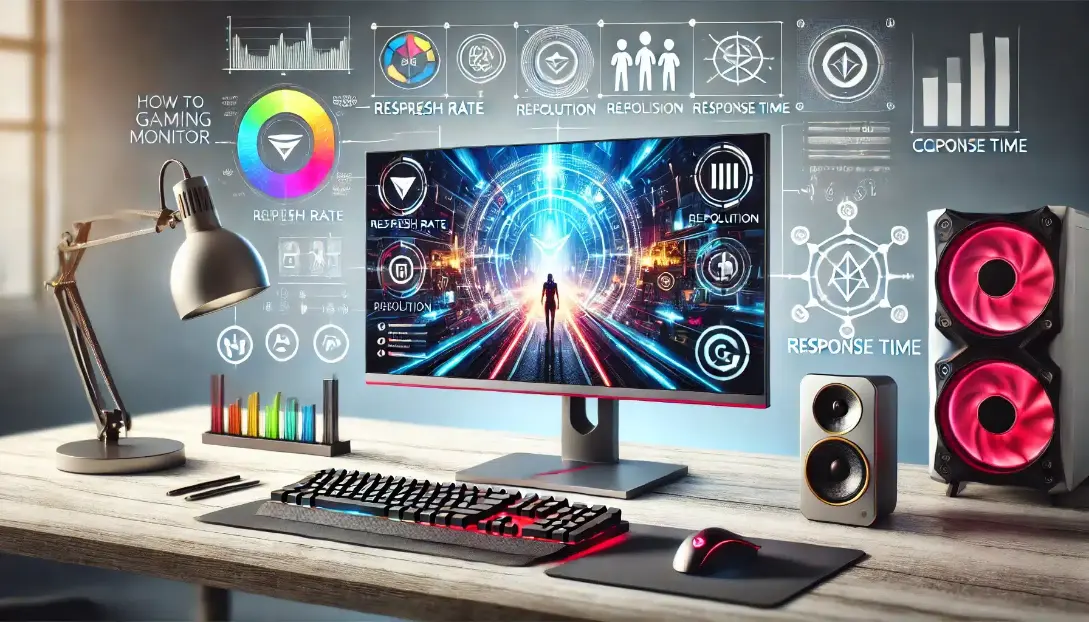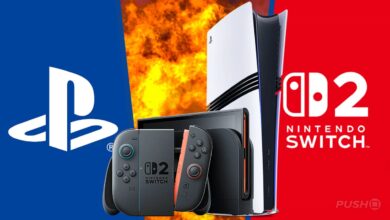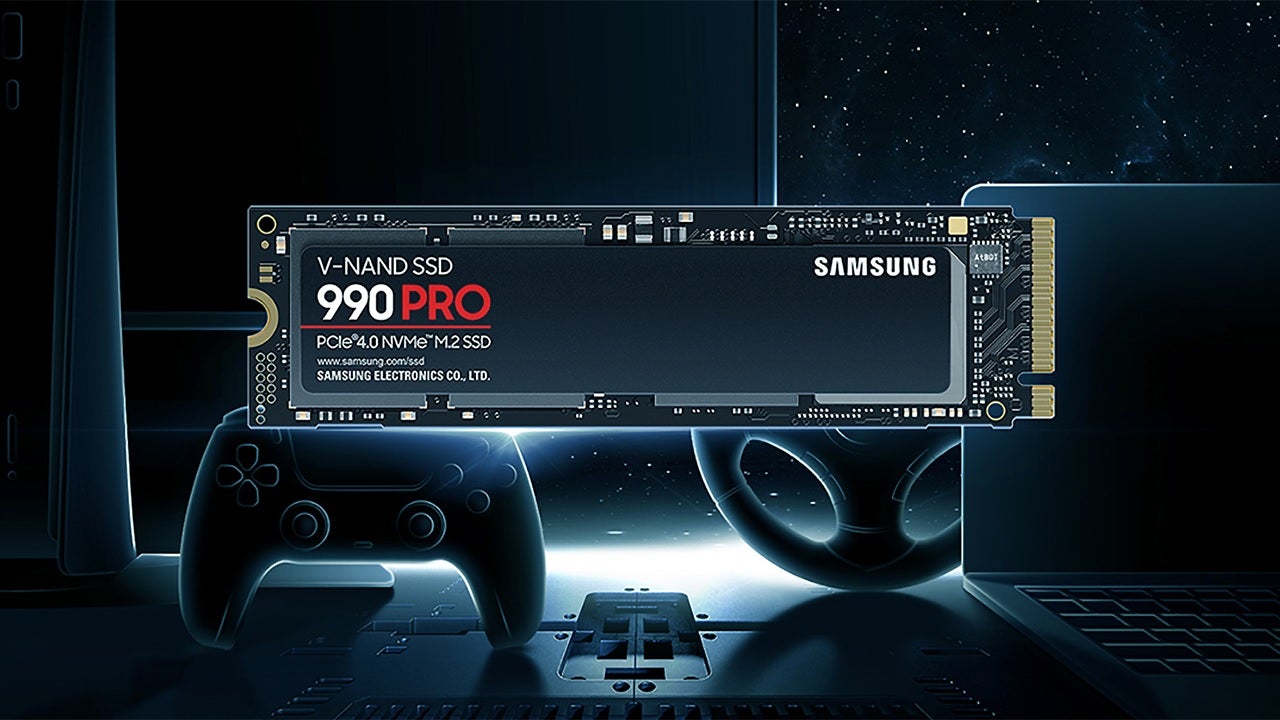1. How to Choose the Best Gaming Monitor
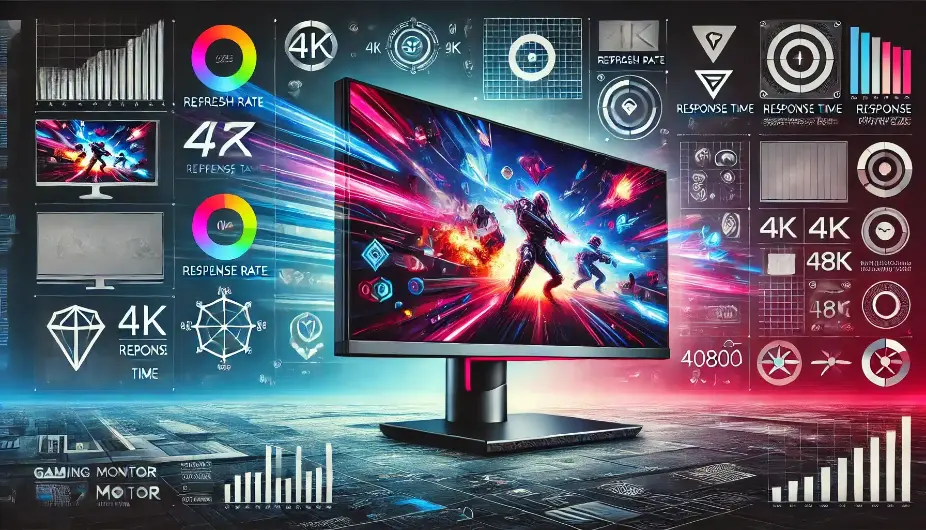
How to Choose the Best Gaming Monitor When it comes to building or upgrading your gaming setup, one of the most important pieces of equipment to consider is the monitor. The best gaming monitor can dramatically enhance your gaming experience, offering crisp visuals, fast response times, and smooth gameplay. Whether you’re a casual gamer or a competitive player, selecting the right monitor is crucial. In this guide, we’ll explore how to choose the best gaming monitor and discuss some of the most cool gaming monitors, good gaming screens, and top gaming monitors available on the market.
Choosing the right gaming monitor can also How to Choose the Best Gaming Monitor be a daunting task with so many options out there. But, with the right information and a clear understanding of your needs, it’s easy to find a monitor that suits your gaming style. Let’s dive into the essential features to consider when selecting the best gaming display and which good computer monitors for gaming offer the best value for your money.
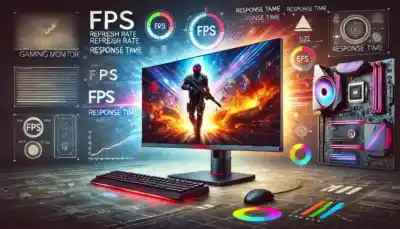
What Makes a Gaming Monitor Great?
The main factors that make a gaming monitor stand out include screen size, resolution, refresh rate, response time, and connectivity options. These features all contribute to providing a superior gaming experience. Let’s break down these essential aspects in more detail:
- Screen Size: A larger screen provides a more immersive experience, but it’s important to find the right balance between size and desk space. Monitors between 24–32 inches are ideal for most gamers.
- Resolution: Higher resolutions like 1080p, 1440p, and 4K allow for sharper images. However, higher resolutions require more powerful hardware to run smoothly, so choose a resolution based on your computer’s capabilities.
- Refresh Rate: The refresh rate determines how many frames per second (FPS) the monitor can also How to Choose the Best Gaming Monitor display. A higher refresh rate (e.g., 144Hz, 240Hz) offers smoother gameplay, particularly for fast-paced games.
- How to Choose the Best Gaming Monitor
- Response Time: A lower response time (measured in milliseconds) reduces motion blur and ghosting, which is essential for competitive gaming.
- Connectivity: Ensure that your gaming monitor has enough ports (HDMI, DisplayPort, USB) to connect to your devices. Compatibility with your PC or console is crucial.
Key Factors to Consider When Choosing the Best Gaming Monitor
Now that you know the essential features, let’s explore the key factors to keep in mind when choosing a gaming monitor:
1. Display Type
Monitors come with different types of display technology, each with its own pros and cons. The three main types are:
- IPS (In-Plane Switching): Known for its color accuracy and wide viewing angles, IPS panels are ideal for games that require vibrant visuals. However, they tend to have slightly slower response times than TN panels.
- TN (Twisted Nematic): TN panels are the fastest in terms of response time, making them ideal for competitive gaming. However, they may have lower color accuracy and narrower viewing angles compared to IPS.
- How to Choose the Best Gaming Monitor
- VA (Vertical Alignment): VA panels provide excellent contrast and better color accuracy than TN panels, but they can also How to Choose the Best Gaming Monitor have slower response times. They’re a good choice for immersive single-player games.
2. Screen Resolution
The best gaming display depends on the resolution that suits your needs. Here’s a breakdown of popular gaming monitor resolutions:
- 1080p (Full HD): Perfect for budget-conscious gamers, 1080p offers excellent performance and is supported by most graphics cards. It’s the most common resolution in gaming monitors.
- 1440p (QHD): If you’re looking for better image quality without going to 4K, 1440p offers a sweet spot between performance and sharp visuals.
- How to Choose the Best Gaming Monitor
- 4K: For gamers with powerful GPUs, 4K offers incredible detail, but it demands a high-performance PC. It’s ideal for gamers who want to experience cutting-edge graphics.
3. Refresh Rate and Response Time
For fast-paced games like first-person shooters or racing games, a high refresh rate and low response time are critical. A monitor with a refresh rate of 120Hz or higher will make your gameplay smoother and reduce motion blur. Additionally, a low response time (1ms to 5ms) minimizes ghosting, which is crucial for competitive gaming.
How to Choose the Best Gaming Monitor. If you’re into cool gaming monitors, you’ll want a display that combines a high refresh rate with low response time to get the best performance. Monitors with 144Hz or 240Hz refresh rates are the top choice for competitive gamers who need fast response times.
4. Connectivity and Compatibility
When selecting a gaming monitor, check the connectivity options available. HDMI, DisplayPort, and USB-C are the most common ports. If you plan to connect your console (e.g., PlayStation or Xbox), make sure the monitor supports HDMI. Additionally, ensure that the monitor is compatible with your PC’s GPU, whether it’s via DisplayPort or HDMI for optimal performance.
Best Gaming Monitors for Different Needs
Depending on your specific gaming needs, there are several options for good gaming screens that fit different styles. Let’s take a look at some of the top gaming monitors available today.
1. ASUS ROG Swift PG259QN
The ASUS ROG Swift PG259QN is one of the top gaming monitors for competitive gamers. It features a blazing-fast 360Hz refresh rate and a 1ms response time, making it ideal for fast-paced games. The monitor also supports G-Sync technology, which eliminates screen tearing and stuttering, providing a smoother gaming experience. With a 24.5-inch Full HD display and IPS technology, this is an excellent choice for those seeking nice gaming monitors for high-level gameplay.
2. Samsung Odyssey G7
If you’re looking for a monitor with a curved display, the Samsung Odyssey G7 is a fantastic option. It boasts a 240Hz refresh rate, a 1ms response time, and a 1000R curvature that provides an immersive gaming experience. The monitor supports both NVIDIA G-Sync and AMD Free Sync Premium Pro for seamless performance. With a resolution of 1440p, it offers excellent sharpness and vibrant colors, making it one of the best gaming displays for immersive gaming. How to Choose the Best Gaming Monitor
3. Dell S2421HGF
The Dell S2421HGF is a 24-inch monitor that offers an excellent balance between performance and affordability. With a 165Hz refresh rate, a 1ms response time, and support for FreeSync, this monitor is a great option for casual and competitive gamers alike. If you’re in the market for good PC monitors for gaming at a reasonable price, the Dell S2421HGF is a solid choice.
How to Choose the Right Gaming Monitor for Your Setup
Choosing the right gaming monitor ultimately depends on your gaming style and setup. Here’s how to match the monitor with your gaming needs:
- Competitive Gamers: If you play fast-paced, competitive games (e.g., shooters, esports), focus on monitors with high refresh rates (240Hz+) and low response times (1ms).
- Casual Gamers: For a more casual gaming experience, a monitor with a 60Hz or 120Hz refresh rate will suffice. Opt for a 1080p or 1440p resolution depending on your GPU and budget.
- Immersive Gamers: If you want a more cinematic experience, a 4K monitor with vibrant colors and a larger screen size (32 inches) will provide an impressive visual experience.
- How to Choose the Best Gaming Monitor
Conclusion: Choosing the Best Gaming Monitor
Choosing the best gaming monitor can also How to Choose the Best Gaming Monitor significantly impact your overall gaming experience. Whether you’re looking for good computer monitors for gaming or the best gaming display to enhance your visual experience, there are numerous options available to meet your needs. Make sure to consider factors like resolution, refresh rate, response time, and connectivity to find the perfect monitor for your gaming style. How to Choose the Best Gaming Monitor
How to Choose the Best Gaming Monitor. If you’re still unsure, check out some reviews of nice gaming monitors and explore options based on your gaming requirements. For more tips and suggestions on gaming equipment, visit GameW for the latest guides and recommendations!
Why Choosing the Right Gaming Monitor Matters
When it comes to gaming, the right monitor affects visuals, responsiveness, and immersion. How to Choose the Best Gaming Monitor is about finding the right balance of features that suit your gaming style and needs. A quality monitor provides clearer images, faster response times, and can even reduce eye strain during extended sessions, all of which can improve your gaming performance and enjoyment.
1. Screen Size and Resolution: Bigger Isn’t Always Better
The size of the monitor is one of the first factors to consider. Most gaming monitors range from 24 to 32 inches, but larger screens aren’t always the best for everyone. Smaller monitors can actually be better for competitive gaming since they allow you to see more details without moving your eyes too much.
Resolution is equally important. Common resolutions include Full HD (1080p), Quad HD (1440p), and 4K (2160p). Higher resolution provides sharper images but requires more powerful graphics cards, so you need to consider your PC’s specs before going for a 4K monitor.
Choosing the Right Screen Size and Resolution
- 24-inch to 27-inch monitors are ideal for most gamers.
- 1080p is sufficient for entry-level gaming, while 1440p or 4K is better for high-end setups.
- Consider desk space and viewing distance when choosing screen size.
2. Refresh Rate: Smooth Gaming Matters
The refresh rate, measured in Hertz (Hz), indicates how many times per second the screen refreshes. Higher refresh rates mean smoother visuals, which are particularly important for fast-paced games. Standard monitors typically have a 60Hz refresh rate, but gaming monitors can range from 120Hz to 240Hz or even higher.
For competitive gaming, 144Hz has become the standard as it offers a noticeable difference in smoothness. However, to fully utilize a high refresh rate, your graphics card must be capable of pushing high frame rates in games.
Understanding Refresh Rates
- 60Hz is sufficient for casual gaming and everyday tasks.
- 144Hz provides a smoother experience, ideal for competitive gaming.
- 240Hz+ is best for professional esports players but requires high-end graphics cards.
3. Response Time: A Key Factor for Competitive Gamers
Response time, measured in milliseconds (ms), refers to how quickly a pixel changes from one color to another. Lower response times reduce motion blur, making fast-paced games look crisper. Monitors with a response time of 1ms to 5ms are ideal for gaming.
Fast response times are especially important in competitive FPS games where even slight delays can affect performance. When considering how to choose the best gaming monitor, prioritize a lower response time if you play reaction-based games.
Choosing the Right Response Time
- 1ms to 5ms response times are optimal for gaming.
- Lower response times reduce motion blur, crucial for fast-paced games.
- Higher response times (above 10ms) are better suited for non-gaming tasks.
4. Panel Type: IPS, TN, or VA?
Gaming monitors typically come with three main panel types: IPS, TN, and VA. Each type has its own strengths and weaknesses, so choosing the right one depends on your priorities. How to Choose the Best Gaming Monitor
IPS (In-Plane Switching) panels offer the best color accuracy and viewing angles but usually have slightly slower response times. TN (Twisted Nematic) panels are known for fast response times and lower costs but often lack color accuracy. VA (Vertical Alignment) panels offer a middle ground with good colors and high contrast but can have slower response times than TN panels.
Panel Type Breakdown
- IPS: Best for color accuracy and viewing angles, ideal for single-player games.
- TN: Fast response times, suitable for competitive gaming on a budget.
- How to Choose the Best Gaming Monitor
- VA: Balanced option with better contrast but slower response times than TN.
5. Adaptive Sync: NVIDIA G-Sync and AMD Free Sync
Screen tearing can be a problem in fast games, and adaptive sync technology helps to fix this issue. NVIDIA G-Sync and AMD Free Sync are two popular technologies that synchronize the monitor’s refresh rate with the frame rate output of the GPU, reducing screen tearing and stuttering.
When considering how to choose the best gaming monitor, look for a model with either G-Sync or Free Sync compatibility, depending on your graphics card brand. Free Sync monitors are generally more affordable, while G-Sync models are optimized for NVIDIA cards.
Choosing the Right Adaptive Sync
- Choose G-Sync if you have an NVIDIA graphics card for optimal performance.
- Free Sync is a great, affordable option for AMD users.
- How to Choose the Best Gaming Monitor
- Many Free Sync monitors are now compatible with NVIDIA cards, providing flexibility.
6. Resolution vs. Refresh Rate: Finding the Balance
High resolutions and high refresh rates can both improve gaming, but they require powerful graphics cards to run smoothly. If you play action-packed games like first-person shooters, a high refresh rate (144Hz or above) might be more beneficial. However, for single-player games with a focus on graphics, higher resolution may be more important than refresh rate.
Balancing resolution and refresh rate is essential in deciding how to choose the best gaming monitor. Your choice should align with the types of games you play most frequently.
Tips for Balancing Resolution and Refresh Rate
- How to Choose the Best Gaming Monitor
- For fast-paced games, prioritize refresh rate (144Hz or higher).
- For visually rich, slower games, prioritize resolution (1440p or 4K).
- Consider your GPU’s power to determine which specs are realistic.
7. Curved vs. Flat Screens: Which is Better for Gaming?
Curved screens provide a more immersive experience by wrapping the display around your field of vision. They are especially popular among gamers who enjoy racing or simulation games. However, they’re not always the best choice for competitive gaming, as they can distort images slightly on the edges. Flat screens are versatile and work well for all gaming genres, making them the most common choice for gamers.
When deciding how to choose the best gaming monitor, consider whether immersion or visual accuracy is more important to you.
Curved vs. Flat Monitor Considerations
- Curved screens enhance immersion but may distort edges.
- Flat screens provide accurate visuals, ideal for competitive gaming.
- How to Choose the Best Gaming Monitor
- Choose a curved monitor if you enjoy simulation or immersive games.
8. Extra Features: Ports, Stand Adjustability, and Blue Light Filters
Additional features like ports, ergonomic stands, and blue light filters add value to your gaming monitor. Multiple ports (HDMI, DisplayPort, USB) make it easier to connect multiple devices. An adjustable stand allows you to tilt, swivel, or adjust the height for comfortable viewing.
Blue light filters are helpful for long gaming sessions, reducing eye strain and allowing you to play for extended periods without discomfort.
Key Extra Features to Look For
- Multiple ports for connectivity with consoles, PCs, and other devices.
- Ergonomic stand for customized height and angle adjustments.
- How to Choose the Best Gaming Monitor
- Blue light filter to reduce eye strain during long sessions.
